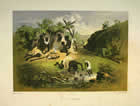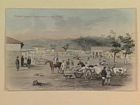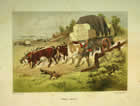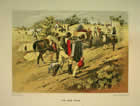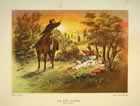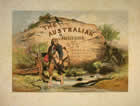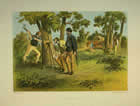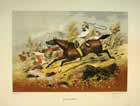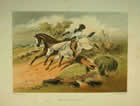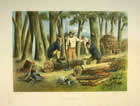- Born
- 1818
Devonshire, England - Died
- 27 October 1880
Melbourne, Victoria, Australia
No other artist has contributed more to the artistic representation of the Australian gold rushes than S.T. Gill. As he travelled through south-eastern Australia, Gill documented the scenes and characters that encapsulated his vision of the diggings for both a domestic and an English audience.
The son of a Baptist parson, Gill was born in Devonshire in England in 1818. From a young age he was a gifted illustrator and on completing school he moved to London to work as a draftsman and water-colour painter at the Hubard Profile Gallery and studio. After suffering personal tragedy and failure, the Gills resolved to start a new life in South Australia and Samuel joined his family when they left Plymouth in 1839.
In Adelaide Gill ran a small gallery in Gawler Place and made a modest living. By the end of 1851 the pull of the gold rushes had been felt in Adelaide. Half of the entire male population of South Australia had joined the migration to the diggings. Samuel followed his treasure-hungry brother John to Victoria, his business now mired in insolvency and his drinking becoming heavy.
Gill went first to Pennyweight Flat at Forrest Creek, though over subsequent years it seems Ballarat was the goldfield he visited most often. His first book on the region was published in Melbourne in 1852 by Collins Street Lithographers Macartney and Galbraith. His work was also quick to be recognised in England, emerging via a London publishing house just one year later.
Gill spent the rest of his life completing works on the south east of Australia, reaching the peak of his popularity and success in the 1850s. Issued in 1864, at a time when Gill’s fortunes had begun to decline, the Australian Sketchbook (Australian Views), featured here, contains twenty-five coloured lithographs and was sufficiently popular to run into several editions. The book is now a rare collector’s piece, though a limited reissue was produced in 1974.
S.T. Gill died of heart failure on the steps of the Melbourne GPO on 27 October 1880. He was buried in an unmarked pauper’s grave. Perhaps part of Gill’s widespread appeal is the fact that his legacy and his personal fortunes were by no means tied to success. The accessibility of his work is enhanced by a life which mirrored the uncertain fortunes of the characters and scenes he painted.
In 1913 the Historical Society of Victoria paid to have Gill’s body moved to a private plot in Melbourne Cemetery. His headstone now reads;
Samuel Thomas Gill
The Artist of the Goldfields
Died in Melbourne, October 27th, 1880
Age 60 years
